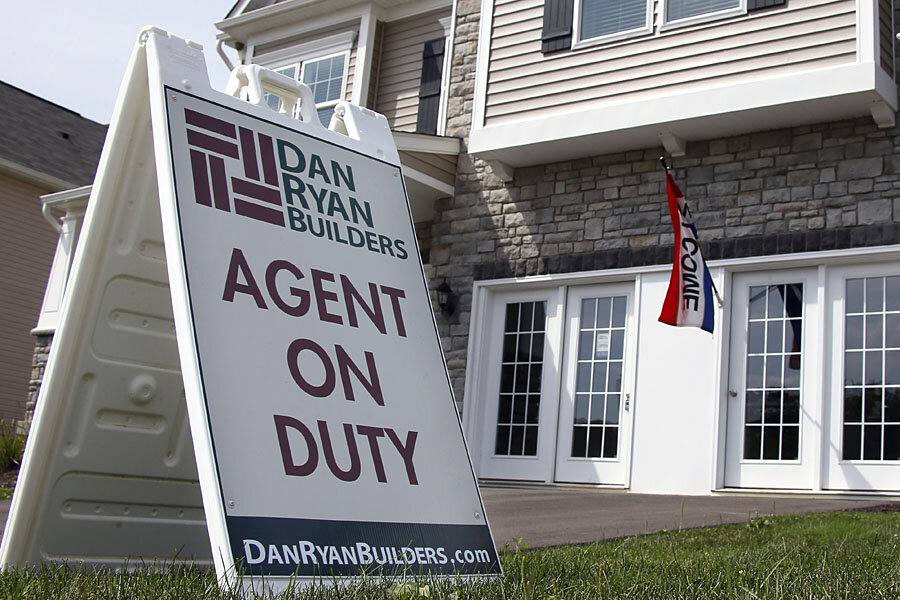New home sales inch up to a six-year high in September
Loading...
After a huge showing in August, new home sales were probably due for a comedown. This month’s report barely moved the needle.
Sales of new single-family homes increased just 0.2 percent in September to an annualized pace of 467,000, according to figures released Friday by the Commerce Department. August sales, too, were revised downward substantially to a yearly rate of 466,000, from 504,000.
Because of the bloated initial gains for August, economists had been expecting a slight dip for September. The report came in below the anticipated 470,000 in sales. Still, September sales were 17 percent above the level seen in September 2013 and represented the highest reading for new home sales of any month since July 2008.
The median sale price for a new home last month was $259,000; the average price was $313,200. There were an estimated 207,000 new homes available for sale, a 5.7 months’ supply.
New homes make up a relatively small portion of US real estate transactions – just 8 percent – and sales figures can be volatile month to month. But September’s report was more in line with the often-frustrating incremental growth that analysts have come to expect from the housing recovery over the past year or so. "Here is little evidence that the new single family housing market is decisively breaking out of its medium-term flat pattern,” MFR Inc. economist Joshua Shapiro writes in an e-mailed analysis. “The best that could be said is that perhaps there is some modest upside impetus,” hinted at by an upward trend in housing starts, which are an important early indicator of new home sales.
The report comes on the heels of Tuesday’s data release on existing home sales, which posted a 2.4 percent gain in September to hit its fastest annualized pace for 2014. One of the more hopeful signs in that strong report was the rise in sales of homes to families, with downward trends in sales of distressed homes and purchases by investors. Such investors largely propelled the early stages of the housing recovery by snapping up large numbers of underwater and undervalued homes. More families and first-time buyers wading into home buying is more indicative of a healthier overall market.
The new home market, however, faces a few more obstacles than the existing home market, write IHS Global Insight US economists Stephanie Karol and Patrick Newport via an e-mailed report. “Why is the new-home market struggling while the existing-home market heats up? New construction tends to be more expensive than existing homes – a tough sell when most of last year’s household formation came from older age cohorts, the bulk of whom have hit retirement age and are looking to downsize,” they write. “Meanwhile, there are 9.7 existing homes for sale for every new one, and many of the new homes on the market are in less desirable areas.”
Still, “there may be light at the end of the tunnel: builder confidence is rising as prices for material inputs subside and as credit begins to flow to land developers more freely," Mr. Newport and Ms. Carol write.








